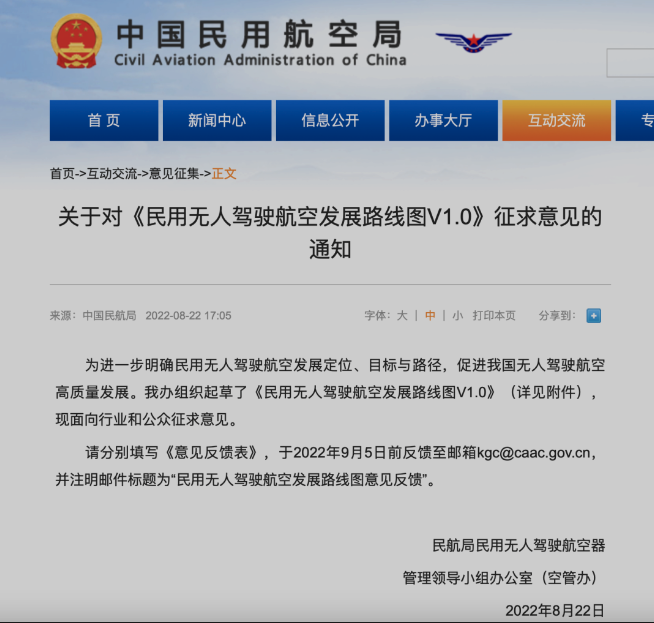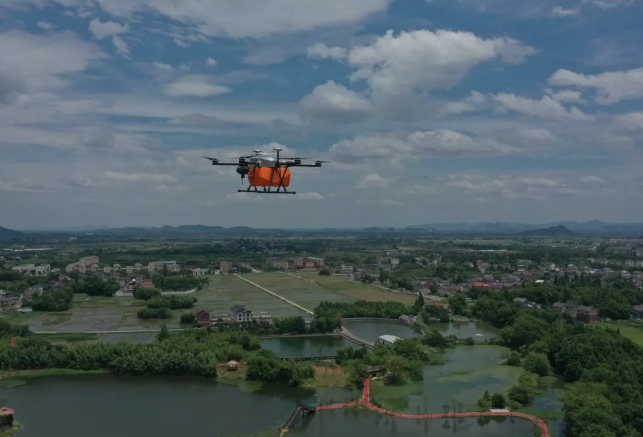On August 22nd, the official website of the Civil Aviation Administration of China issued a notice soliciting opinions on the "Roadmap for the Development of Civil Unmanned Aviation v1.0". The purpose of this roadmap is to further clarify the development positioning, goals, and paths of civil unmanned aviation, and promote the high-quality development of unmanned aviation in China.

The roadmap proposes four basic principles: adhering to safety as the top priority, adhering to classified management, adhering to innovation driven, and adhering to openness and integration; Three development positioning: serving the construction of smart civil aviation, promoting industry innovation and development, and accelerating the orderly implementation of applications. And divide the development of unmanned aviation into three stages. We plan to achieve a unified spatiotemporal benchmark by 2025, enhance the safe autonomous flight and navigation support capabilities of aircraft, and reduce transportation costs. By 2030, digitize airspace information and establish a sound platform and mechanism for airspace sharing, data interconnection, efficient operation, and integrated management and service. By 2035, establish a manned and unmanned air transportation system, achieve a wide range of transportation and a flexible and efficient networked layout, and enhance international competitive advantages.

At the same time, the roadmap also requires the expansion of six development areas, from remote control to autonomous aircraft, from digitalization to intelligent operating environment, from automation to intelligent control and operation, from limited to comprehensive navigation services, from single to systematic supervision capabilities, and from cargo to passenger transportation capabilities, to weave three operational networks, including routes, takeoff and landing areas, and operational information monitoring, to gather organization, management, industry, and Four collaborative elements, including resources, comprehensively support the operation of three categories: open, specific, and approved.


Previously, the "Technical Requirements for Urban Scene Delivery Electric Multi rotor Unmanned Aerial Vehicle (Light and Small) System" and "Delivery Route Planning Specification for Urban Scene Light and Small Unmanned Aerial Vehicle" jointly written by Antwork provided necessary regulatory requirements from the micro level of actual implementation. The proposal of this roadmap has delineated the trajectory from a macro level, setting a clear direction for the development of domestic civil aviation. The roadmap is not only a recognition of Antwork's past experience in urban delivery pilot projects, but also an encouragement and imagination for future development. In the future, Antwork will use the roadmap as a development guide, actively practice development requirements, deeply cultivate the technical field, and apply more scenarios to contribute to the development of China's civil aviation industry.
咨询/售后服务热线:
400-765-5670
公众号-1

视频号-2
